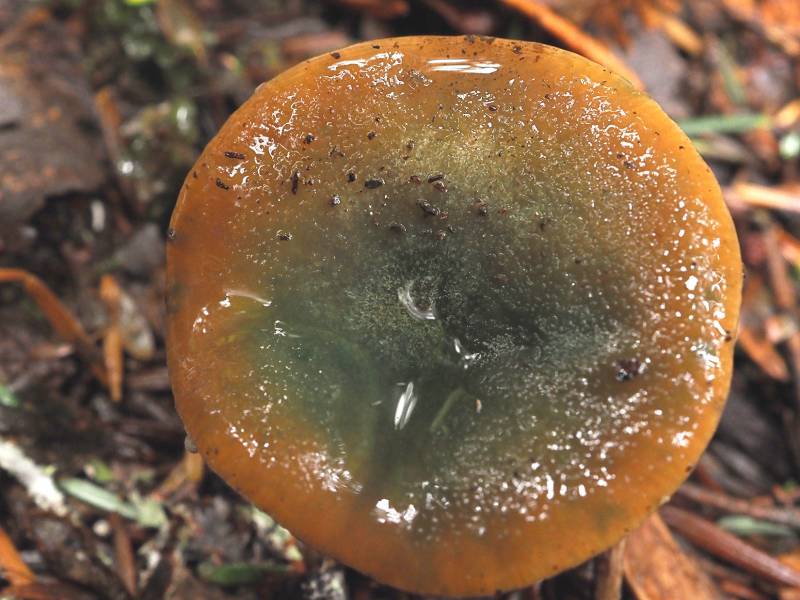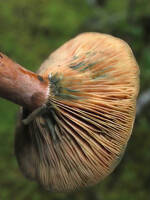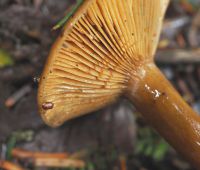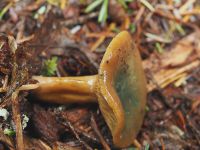Distribution: Broad North America and Europe
Conservation Status: Not of concern
Edibility: The name Lactarius deliciosus has been applied, in both North America and Europe, to a widespread group of common mushrooms that have in common an overall orange to salmon coloration, zonate caps, a tendency to discolor greenish when bruised or in age, and orange to reddish orange latex. In western North America, several varieties of L. deliciosus have been recognized, however, recent studies show that, although these are closely related to the “real” L. deliciosus, they probably should not be considered the same species. One of our orange milk-caps has an orange, moist to subviscid cap with a slight whitish bloom, subtle zonation, and orange spots when fresh. The stipe has a whitish bloom and often watery orange spots over a light orange background. The gills are light orange with paler edges, the scant bright orange latex stains the flesh reddish on exposure, and the fruitbodies develop moderate to complete green-staining in age. Another type occurs later in the season in coastal forests, often under spruce. It exhibits caps with strong grayish green colors mixed with brownish orange, orangeish gills and stipe, and extensive green staining. The orange latex is scant and does not change or stain the flesh. Much work needs to be done before species concepts for our orange milk-caps and their relationships with similar species elsewhere are clarified. All of them are gathered for food, however, the interior of a fresh-looking specimen may be home to numerous larvae and, even when larva-free, they are not generally considered deserving of their species name.
The name Lactarius deliciosus has been applied, in both North America and Europe, to a widespread group of common mushrooms that have in common an overall orange to salmon coloration, zonate caps, a tendency to discolor greenish when bruised or in age, and orange to reddish orange latex. In western North America, several varieties of L. deliciosus have been recognized, however, recent studies show that, although these are closely related to the “real” L. deliciosus, they probably should not be considered the same species. One of our orange milk-caps has an orange, moist to subviscid cap with a slight whitish bloom, subtle zonation, and orange spots when fresh. The stipe has a whitish bloom and often watery orange spots over a light orange background. The gills are light orange with paler edges, the scant bright orange latex stains the flesh reddish on exposure, and the fruitbodies develop moderate to complete green-staining in age. Another type occurs later in the season in coastal forests, often under spruce. It exhibits caps with strong grayish green colors mixed with brownish orange, orangeish gills and stipe, and extensive green staining. The orange latex is scant and does not change or stain the flesh. Much work needs to be done before species concepts for our orange milk-caps and their relationships with similar species elsewhere are clarified. All of them are gathered for food, however, the interior of a fresh-looking specimen may be home to numerous larvae and, even when larva-free, they are not generally considered deserving of their species name.
PNW Herbaria: Specimen records of Lactarius deliciosus in the Consortium of Pacific Northwest Herbaria database
CalPhotos: Lactarius deliciosus photos







